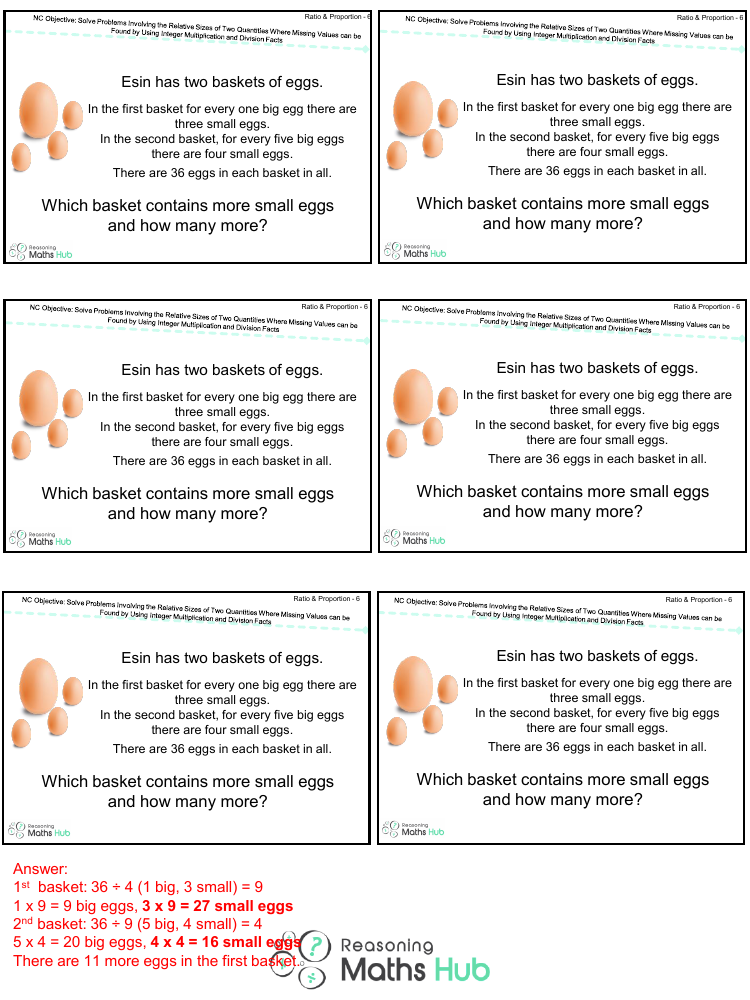Solve Problems Involving the Relative Sizes of Two Quantities 2 - Reasoning

Maths Resource Description
Esin is faced with a problem involving two baskets of eggs, each containing a total of 36 eggs, but with different ratios of big to small eggs. To determine which basket holds more small eggs and by what quantity, we must first understand the ratio of big to small eggs in each basket. In the first basket, the ratio is 1 big egg to 3 small eggs. When we divide the total number of eggs (36) by the sum of the ratio parts (4), we find that there are 9 big eggs and 27 small eggs in the first basket.
The second basket presents a different ratio, with 5 big eggs for every 4 small eggs. Applying the same method of dividing the total number of eggs by the sum of the ratio parts (9), we find that the second basket contains 20 big eggs and 16 small eggs. By comparing the number of small eggs in both baskets, it is clear that the first basket has more small eggs. Specifically, there are 11 more small eggs in the first basket than in the second. Therefore, Esin's first basket is the one with a greater number of small eggs.